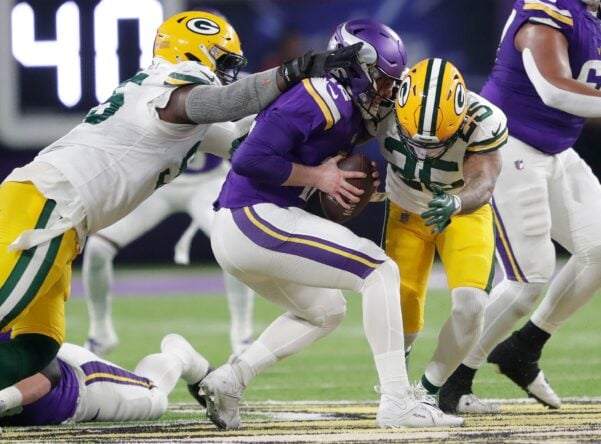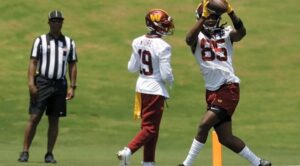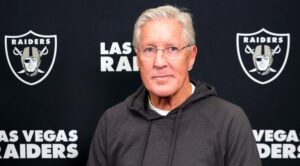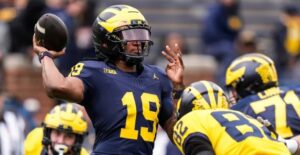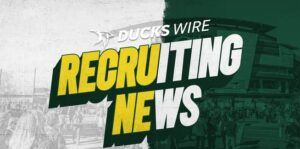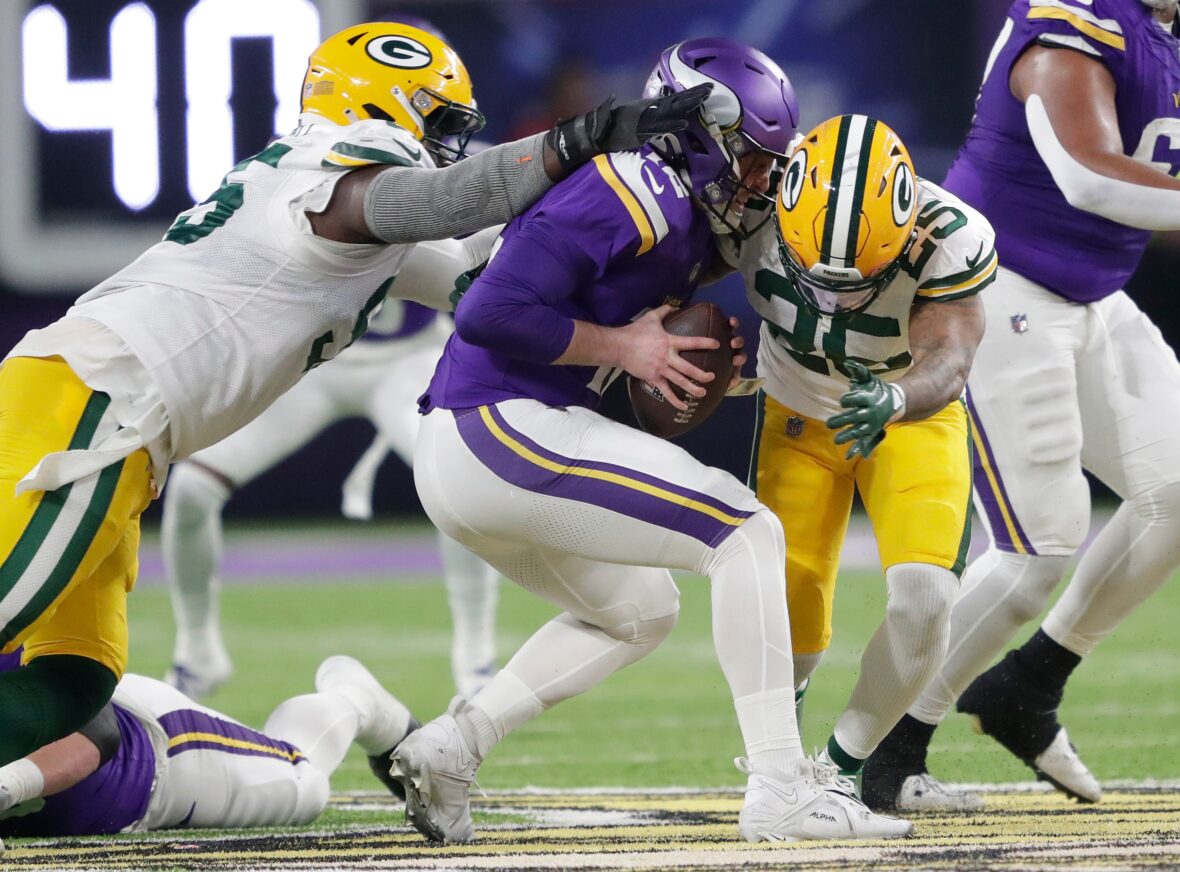
General manager Kwesi Adofo-Mensah has been busy in free agency, making several signings. Some players, such as defensive end Jonah Williams, will compete for roster spots, while others like Jonathan Greenard will aim for Pro Bowl recognition. The quarterback situation is particularly intriguing, with newcomer Sam Darnold looking to revive his career.
He benefits from being part of the most effective offense he’s experienced thus far, especially during his time as a starter. After spending three years with the struggling New York Jets and two more with the Carolina Panthers, his backup role in 2023 behind Brock Purdy provided a more favorable environment. Working with receivers like Justin Jefferson, Jordan Addison, and T.J. Hockenson under coaches Kevin O’Connell and Josh McCown is why many anticipate Darnold to showcase significant improvement in the upcoming season.
Besides Darnold, the Vikings also have two other quarterbacks on their roster: Nick Mullens and Jaren Hall. Mullens brings veteran experience to the team and serves as a reliable backup due to his willingness to take shots downfield, a crucial element in keeping O’Connell’s offense effective. On the other hand, Hall, a fifth-round draft pick last year, was initially designated as the emergency quarterback. However, he was thrust into action during Week 9 due to injuries and inconsistent quarterback play later in the season.
If the Vikings decide to draft a quarterback in the upcoming draft, Mullens and Hall could face a roster crunch. With the new signal-caller and Darnold securing two roster spots, there may only be one spot left for Mullens and Hall.
Traditionally, NFL teams carried only two quarterbacks—the starter and the backup. For instance, Kirk Cousins shared the quarterback room with Sean Mannion and sometimes a practice squad player. However, the NFL introduced the emergency QB rule in 2023, allowing teams to have a third quarterback active on game day without using up a valuable active spot. This rule change has made it more sensible for teams to carry an additional quarterback to avoid situations like the 49ers faced in the NFC Championship Game against the Eagles when they had no remaining quarterbacks available to play.
In Minnesota, the quarterback hierarchy was well-defined. Cousins held the QB1 position, Mullens was QB2, and Hall was designated as the emergency quarterback but not yet ready for the full-time backup role. However, when Mullens sustained a back injury and Cousins suffered a season-ending Achilles injury, Hall was thrust into the spotlight and started Week 9’s game in Atlanta. Unfortunately, a concussion sidelined him, leading to an emergence of Dobbs as the starter.
In Week 17 against the Packers, O’Connell opted to start Hall after Dobbs and Mullens struggled to secure possession of the football. However, Hall appeared overwhelmed by the pressure, leading to Mullens replacing him in the second half.
Looking ahead, the Vikings face a decision between Mullens and Hall once again. Mullens has demonstrated his ability to operate effectively in an O’Connell offense, albeit with a tendency to commit turnovers. On the other hand, Hall has yet to showcase the same level of proficiency, although there may still be room for growth considering he is entering only his second season. Despite being a fifth-round pick and not showing much promise in preseason or regular-season opportunities, Hall remains a potential option for the Vikings’ quarterback depth chart.
The Vikings face a crucial decision regarding Hall’s future based on his development and the team’s overall strategy. It boils down to whether they prefer to have two quarterbacks (a rookie and Hall) who need significant reps to progress behind planned starter Darnold, or if they opt for Mullens, who could spare some reps during training camp and the preseason, benefiting the rookie while remaining ready to play if needed.
Opting for Mullens appears to be a more favorable option for the incoming prospect. From a salary cap perspective, releasing Mullens after training camp would save approximately $1.8 million, while releasing Hall would save about half of that amount.
One potential strategy could involve placing Hall on the practice squad to retain all four quarterbacks. Alternatively, the Vikings might explore trading Mullens to a team in need of a veteran backup in exchange for a late-round pick, similar to how Mullens initially joined Minnesota.
The Vikings have various options to consider, but it’s evident that with the potential arrival of a rookie quarterback on April 25, such as Drake Maye, J.J. McCarthy, Jayden Daniels, or another prospect, one of Mullens or Hall will not be part of the 53-man roster in September.
